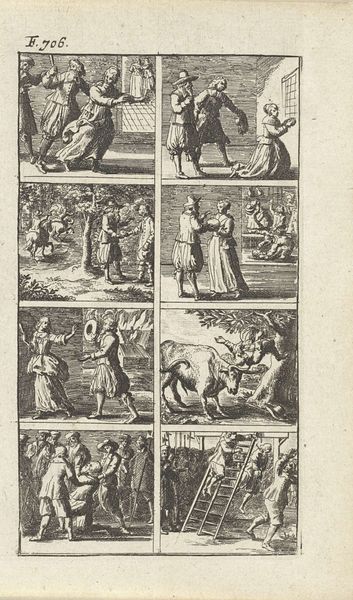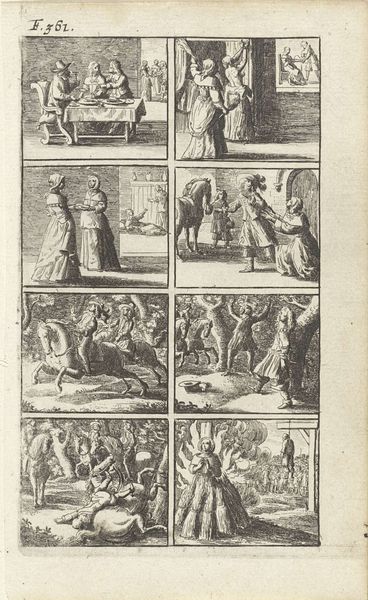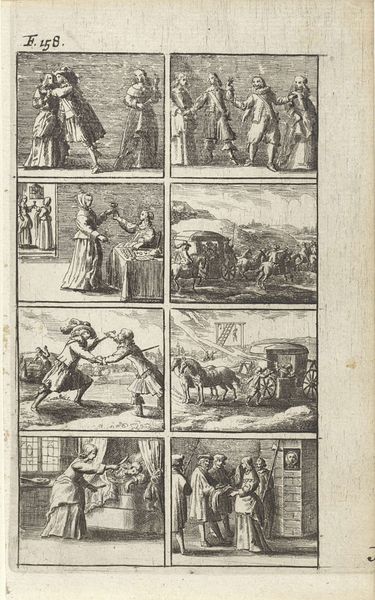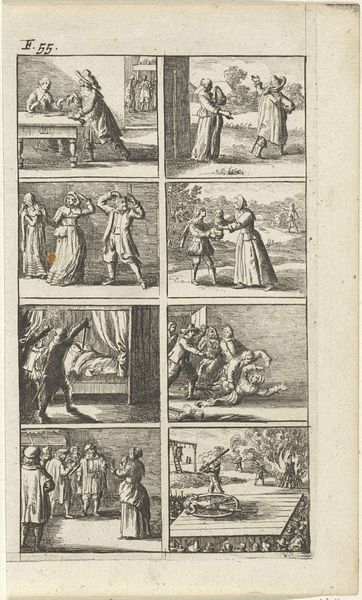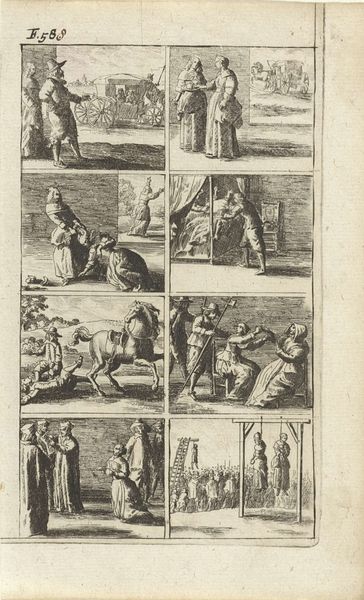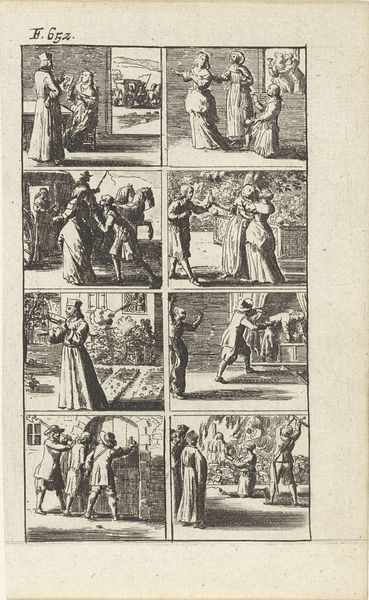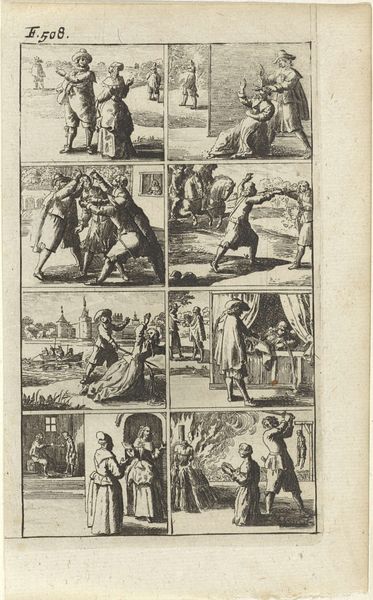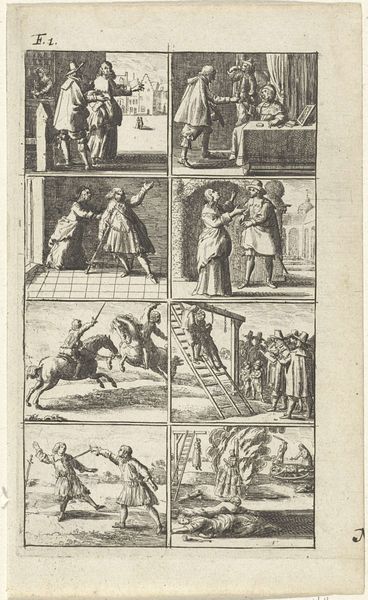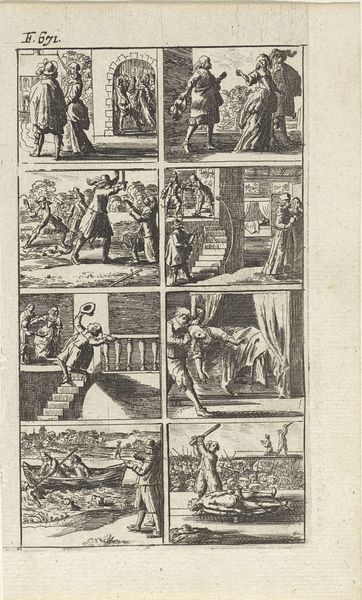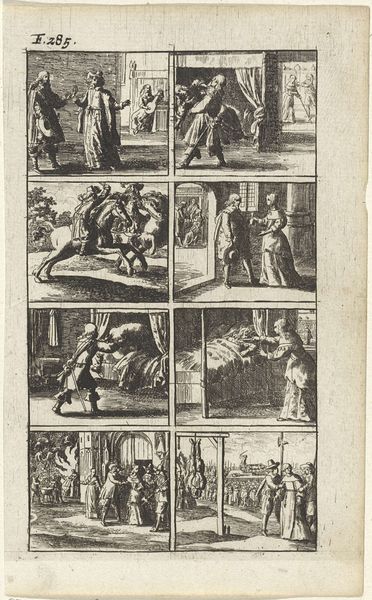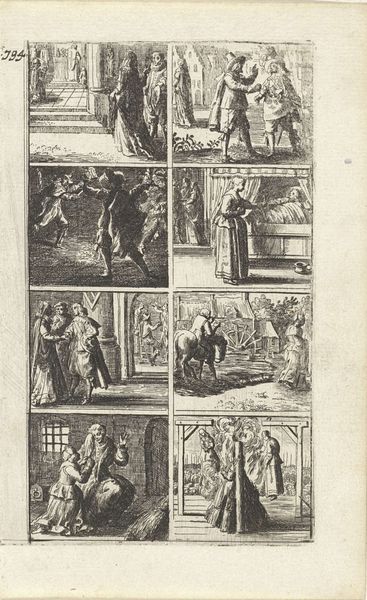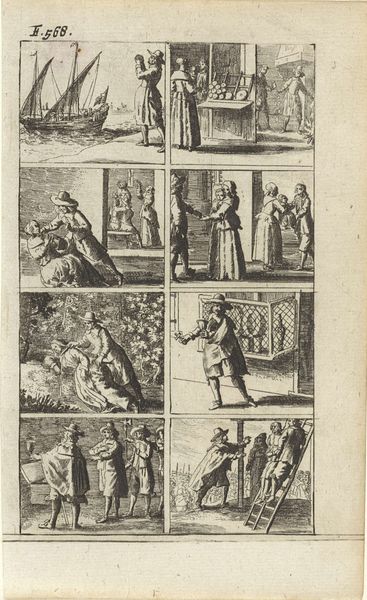
Verhaal met voorstellingen van moord en doodstraf (F. 196.) 1667
0:00
0:00
print, etching
#
comic strip sketch
#
aged paper
#
toned paper
#
narrative-art
#
baroque
# print
#
etching
#
sketch book
#
figuration
#
personal sketchbook
#
sketchwork
#
pen-ink sketch
#
sketchbook drawing
#
history-painting
#
storyboard and sketchbook work
#
sketchbook art
Dimensions: height 155 mm, width 95 mm
Copyright: Rijks Museum: Open Domain
This small print was made by Abraham Dircksz. Santvoort in the mid-17th century, using the intaglio technique of etching. The stark contrast of the black lines against the white paper creates a dramatic effect, fitting for the story of murder and capital punishment it depicts. The process begins with a metal plate, coated with a waxy ground. The artist then scratches away the ground to expose the metal, using a sharp needle. When the plate is dipped in acid, the exposed lines are etched into the surface. Ink is then applied to the plate, filling the etched lines, and the surface is wiped clean. Finally, the plate is pressed onto a sheet of paper, transferring the ink and creating the print. The material qualities of the etching - the fineness of the lines, the depth of the shadows - all contribute to the narrative's intensity. Santvoort's skillful manipulation of the etching process, a relatively accessible medium, brings a brutal social reality to light, inviting viewers to contemplate the dark side of 17th-century justice. By focusing on the material and the making, we can better understand the print's historical impact.
Comments
No comments
Be the first to comment and join the conversation on the ultimate creative platform.
